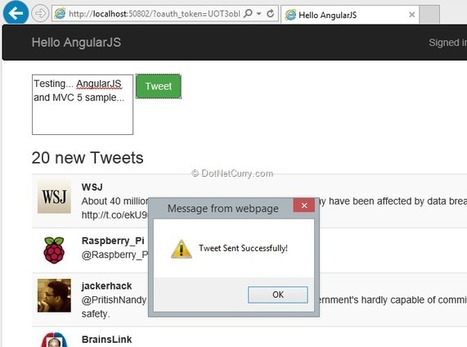In this article, we will explore how to use AngularJS to Post Data and use AngularJS Custom Directives in an ASP.NET MVC application.
So to post data, we need to simply call the save function on our resource instance. However there is a slight gotcha. The $resource object expects all the functions to post to the same URL. In MVC terms, this means posting to the same action method with different HttpGet/HttpPost/HttpPut etc attributes.
In our code, currently the HomeController uses GetTweets method to get the Data. Now Posting to a URL called GetTweets is semantically icky. So let’s update the Controller method to be called justTweet. So we will do GET, POST, PUT etc. requests to the url /Home/Tweet.




 Your new post is loading...
Your new post is loading...







